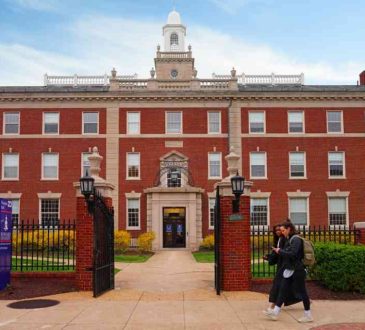Want a New Competitive Edge: Encourage Your Best Former Employees to Come Back

In survey after survey of senior business leaders across the country, employee retention ranks in the top three business priorities for their companies. Higher voluntary churn than companies want, particularly among high performers, is creating a significant drag on productivity, efficiency, and profit. Article after article provides advice on employee retention – tips and tricks to keep people with us. Frankly, it’s exhausting.
(Of course, business and the economy have conditioned the workforce to constantly be looking so that they aren’t caught flat-footed at the next down turn – but that’s another article.)
Instead on putting the focus on retention, we should instead be putting the focus on encouraging great people to return to us in a myriad of ways over the entire course of their careers. When we think long term about an employee’s potential – not just about how they contribute during their tenure with us – we transform our companies to be thriving, future-proofing organizations that retain top talent longer.
The Boomerang Principle – the belief that organizations that allow and encourage their former employees to return have a strategic advantage over those that don’t – put into action can improve virtually all the key metrics we measure for success – recruiting, productivity, efficiency, partnership, influence, and profitability.
Why? Because when people return to us, they:
- Validate our business and culture for our current employees
- Become fully deployed up to 12 times faster than first time new employees, driving efficiency and profitability
- Bring the experience, network and training they gained away from us with them to our advantage
To do this, we must shift our thinking from former employees as “dead to us” to being valuable to us and worthy of our attention so we can keep the relationship, with the people who leave us well, strong and positive.
What? Why would I put any effort into the people who left us – particularly if they went to a competitor? Let’s look at the dynamics in play.
Dynamics In Play Today
- Job Tenure Is Shorter
Average job tenure is lower today than it’s ever been except during economic downturns. In particular, Millennials (born 1980 – 2000), who make up almost 50% of today’s workforce, intend to stay in companies and positions for shorter periods than their GenX and Boomer colleagues did at their age. With their parents negatively impacted during the Great Recession providing ample example and counsel, this growing cohort “knows” that they need to stay fresh and move around so that they can get where they want to go, and be more employable the next time the economy dips. At the same time, in my research, more than 60 percent of Millennials indicate that they would consider returning to a company during their career. To not consider rehiring your former employees is to shrink your total recruitment pool dramatically over time.
- Your Alumni Can Hurt You or Help You
In today’s highly-networked, social media world, everyone who leaves our companies can help us or hurt us, and we should be doing everything we can to help them help us – even if they are at a competitor. Job review sites including Glass Door and Career Bliss have become the first stop for job recruits who want to get a handle on what it’s like to work for an organization. Positive reviews from former employees hold extra weight and influence. However, if we consider our alumni an extension of our companies instead of “dead to us,” then we can help them help us by being advocates in our recruiting, business development, and partnership. Much like colleges count on their faithful alumni to help recruit and then encourage matriculation for new students, companies should be doing the same. It shortens recruiting cycles and costs dramatically and increases the general positive awareness and overall net promoter score of the organization.
- Total Tenure Can Be More Valuable Than Consecutive Tenure
When an organization is open to re-hiring employees, they increase the total positive impact potential of every employee. Total tenure – measure over a career can span many years and be extremely valuable … just in multiple tours of duty. The perspective, training, and experience an individual receives away from your organization can be MORE valuable than the training and experience you can provide yourself. Gaining an outsider’s point of view with an insider’s understanding of culture and process is incredibly useful. In addition, returning employees become fully utilizable incredibly faster than new employees, and in fast-moving markets, this can be a significant competitive edge in key positions.
A Culture of Return is a Culture to Stay For
The first requirement in attracting former employees to return is being a place people want to return to. The irony, of course, is that the more effort you devote to creating a culture to return to, the better the culture is for the people who are in your organization today. A culture of return is a culture to stay for – it’s a valuable culture highly prized by current and former employees alike.
Valuable cultures are vision-based where every employee understands their potential to impact the organization’s ability to achieve its goals. They are cultures that hold standards of performance high, as well as have explicit positive values that guide behavior and decisions. They are also cultures of appreciation where effort and achievement are actively acknowledged by everyone at every level. And, valuable cultures are organizations that understand that leadership happens everywhere and equip their people to lead from any seat in the boat. They are places where people thrive and whose logo they are proud to share on their resumes.
Importantly, valuable cultures appreciate individual objectives and understand that each person’s goals may not be able to be met by one company – no matter how large, flexible, creative, international, or profitable.
Creating a Path To Return
To put the Boomerang Principle to work, we must create paths of return that a) keep our former employees in relationship with our companies and b) treat them as an important constituent in our communication efforts.
- Add Former Employees To Your Communications Mix
If current employees, the people who “buy” our value propositions the most, are our first, most important customers, then our former employees need to be our second most important customers. At the very least, include former employees in company newsletter and email lists, regularly keeping them up to date with the organization’s progress and plans.
- Create a Corporate Alumni Program
Don’t rely on former employees to “run” an alumni program on LinkedIn. Create your own private network (if you can’t create your own or use third party solutions such as Conenza’s or SAP’s, create a private Facebook Group for your former employees). Regularly post information, open job positions, even training modules stripped of proprietary information. Reward former employees for referring job applicants or new hires; even a small remuneration will be appreciated and cost much less than traditional recruiting fees. If you can, offer special deals to former employees – not quite as generous as what you offer to your employees, but better than what you offer to your customers.
- Keep Connected To Top Performers
Actively keep connected to the top 20 percent of your former employees. Who are the top performers you’d like to return under the right circumstances? Leadership should be in active relationship with these people at every level so that when the right opportunity comes along they are able to put together an attractive offer that will be readily received. Even if the person does not accept your offer, their allegiance to the company will most likely stay strong. And the more positive allegiances we all have, the stronger our organizations are.
Every organization seeks the top talent because we know that the top talent in the right culture is what will provide our competitive edge. Now is the time to create a new competitive edge in your market by keeping today’s more transient talent close to us so that they may easily provide value over their entire careers – from being an advocate to a partner and even a returning employee. The future of business relationships is a future of mutually-beneficial allegiances that provide the competitive edge in our hyper-connected world.
Written by: Lee Caraher, CEO and Author of The Boomerang Principle: Inspire Lifetime Loyalty from Your Employees.
Bring the best of the CEOWORLD magazine's global journalism to audiences in the United States and around the world. - Add CEOWORLD magazine to your Google News feed.
Follow CEOWORLD magazine headlines on: Google News, LinkedIn, Twitter, and Facebook.
Copyright 2025 The CEOWORLD magazine. All rights reserved. This material (and any extract from it) must not be copied, redistributed or placed on any website, without CEOWORLD magazine' prior written consent. For media queries, please contact: info@ceoworld.biz











